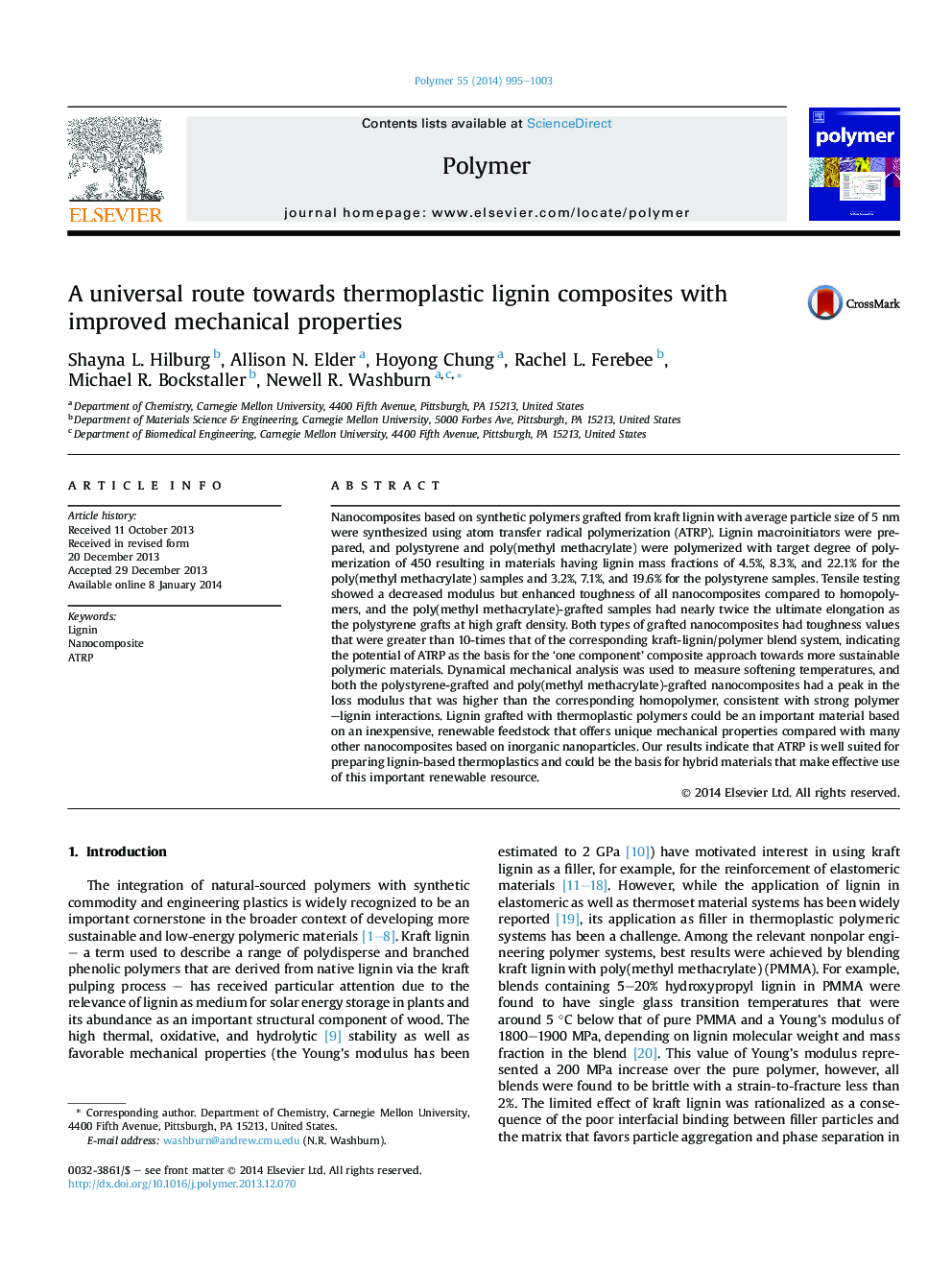| Article ID | Journal | Published Year | Pages | File Type |
|---|---|---|---|---|
| 5181818 | Polymer | 2014 | 9 Pages |
Nanocomposites based on synthetic polymers grafted from kraft lignin with average particle size of 5Â nm were synthesized using atom transfer radical polymerization (ATRP). Lignin macroinitiators were prepared, and polystyrene and poly(methyl methacrylate) were polymerized with target degree of polymerization of 450 resulting in materials having lignin mass fractions of 4.5%, 8.3%, and 22.1% for the poly(methyl methacrylate) samples and 3.2%, 7.1%, and 19.6% for the polystyrene samples. Tensile testing showed a decreased modulus but enhanced toughness of all nanocomposites compared to homopolymers, and the poly(methyl methacrylate)-grafted samples had nearly twice the ultimate elongation as the polystyrene grafts at high graft density. Both types of grafted nanocomposites had toughness values that were greater than 10-times that of the corresponding kraft-lignin/polymer blend system, indicating the potential of ATRP as the basis for the 'one component' composite approach towards more sustainable polymeric materials. Dynamical mechanical analysis was used to measure softening temperatures, and both the polystyrene-grafted and poly(methyl methacrylate)-grafted nanocomposites had a peak in the loss modulus that was higher than the corresponding homopolymer, consistent with strong polymer-lignin interactions. Lignin grafted with thermoplastic polymers could be an important material based on an inexpensive, renewable feedstock that offers unique mechanical properties compared with many other nanocomposites based on inorganic nanoparticles. Our results indicate that ATRP is well suited for preparing lignin-based thermoplastics and could be the basis for hybrid materials that make effective use of this important renewable resource.
Graphical abstractDownload full-size image
